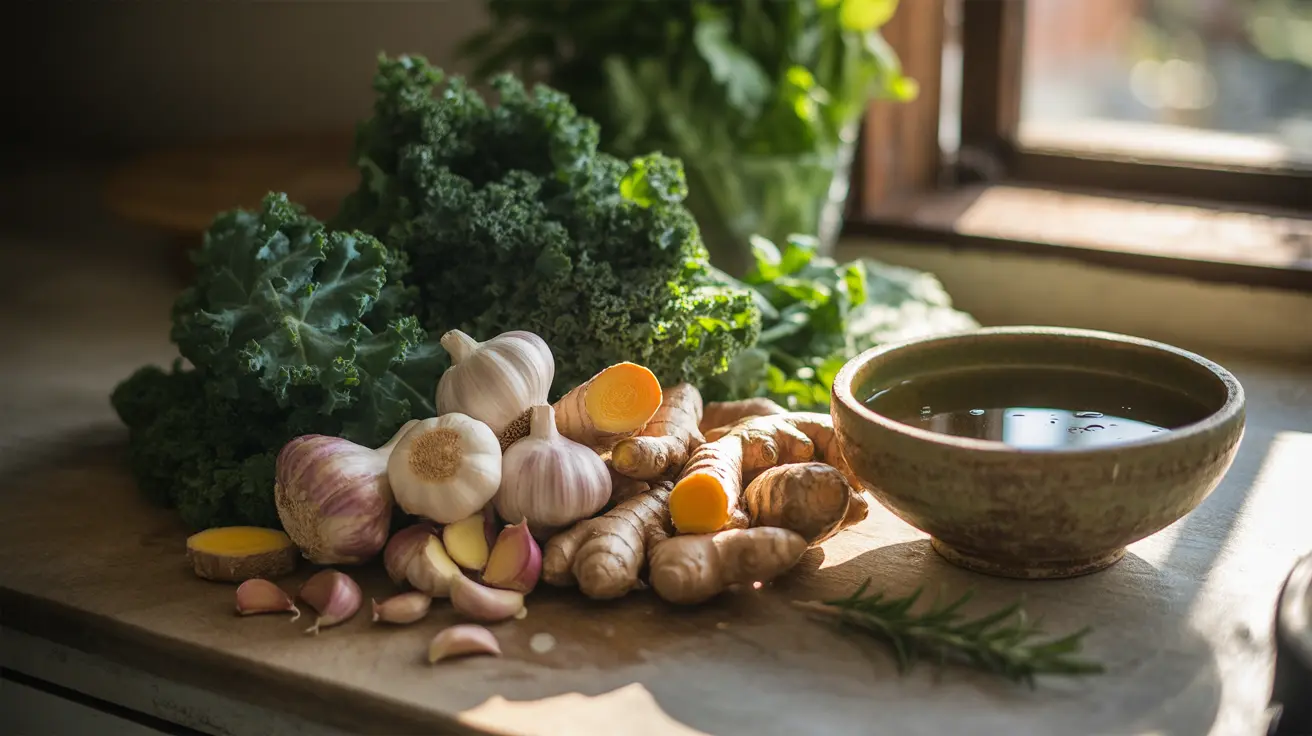Blood clots can be a serious health concern, particularly when they develop in the legs. While medical treatment is essential for diagnosed blood clots, understanding natural approaches to prevention and support can be valuable for overall vascular health. This comprehensive guide explores evidence-based natural methods that may help prevent blood clots and support traditional medical treatments.
Understanding Blood Clots and Natural Prevention
Before exploring natural approaches, it's crucial to understand that blood clots require proper medical diagnosis and treatment. Natural methods should be viewed as complementary strategies to support overall circulation and vascular health, not as replacements for prescribed medical care.
Dietary Approaches for Blood Clot Prevention
Natural Blood-Thinning Foods
Certain foods contain compounds that may help improve circulation and reduce the risk of blood clot formation:
- Garlic and onions (contain allicin)
- Leafy greens (high in vitamin K)
- Ginger and turmeric (natural anti-inflammatory properties)
- Cayenne pepper (improves circulation)
- Olive oil (heart-healthy fats)
Herbs and Spices with Blood-Thinning Properties
Several herbs and spices have shown potential in supporting healthy blood flow:
- Cinnamon (improves circulation)
- Oregano (contains natural blood-thinning compounds)
- Thyme (supports cardiovascular health)
- Rosemary (improves blood flow)
Lifestyle Modifications for Better Circulation
Regular Physical Activity
Exercise plays a crucial role in preventing blood clots and maintaining healthy circulation. Recommended activities include:
- Walking for 30 minutes daily
- Swimming
- Gentle yoga
- Ankle pumps and leg raises
- Regular stretching breaks during long periods of sitting
Hydration and Circulation
Proper hydration is essential for maintaining healthy blood flow and reducing clot risk. Aim for 8-10 glasses of water daily, and consider incorporating natural hydrating beverages like:
- Green tea
- Lemon water
- Coconut water
- Herbal teas
Natural Supplements for Vascular Health
While supplements may offer benefits, it's crucial to consult healthcare providers before starting any supplement regimen, especially if taking blood-thinning medications:
- Omega-3 fatty acids
- Nattokinase (derived from fermented soybeans)
- Bromelain (found in pineapple)
- Vitamin E (in consultation with healthcare provider)
Prevention During Travel and Immobility
Long periods of immobility can increase blood clot risk. Essential prevention strategies include:
- Compression stockings during travel
- Regular movement breaks every 2-3 hours
- Simple exercises while seated
- Proper hydration throughout journeys
Frequently Asked Questions
What are the natural methods to help dissolve blood clots in the legs?
Natural methods that may support healthy circulation include regular exercise, proper hydration, and consuming foods with natural blood-thinning properties like garlic, ginger, and turmeric. However, these methods should never replace prescribed medical treatment for existing blood clots.
Can foods like turmeric, ginger, and cinnamon help prevent blood clots?
These spices contain compounds that may help improve circulation and reduce inflammation. Turmeric contains curcumin, ginger has gingerols, and cinnamon contains coumarin, all of which may support vascular health when consumed as part of a balanced diet.
How effective are lifestyle changes, such as regular exercise and staying hydrated, in reducing the risk of blood clots?
Regular exercise and proper hydration are highly effective in promoting healthy circulation and reducing blood clot risk. Physical activity helps maintain good blood flow, while adequate hydration helps prevent blood from becoming too thick.
What are the potential risks of using natural supplements like vitamin E and ginkgo biloba for blood clot prevention?
Natural supplements can interact with blood-thinning medications and may increase bleeding risk. Always consult healthcare providers before starting any supplement regimen, as they can monitor potential interactions and adjust dosages accordingly.
How can I prevent blood clots from forming during long trips or periods of immobility?
During long periods of immobility, wear compression stockings, take regular movement breaks, perform seated exercises, and stay well-hydrated. These measures help maintain proper circulation and reduce the risk of blood clot formation.




